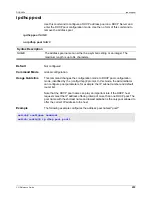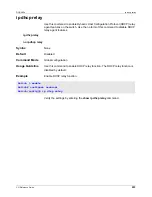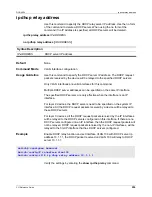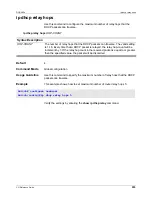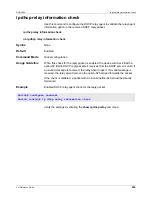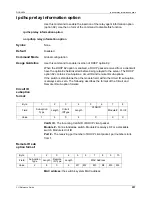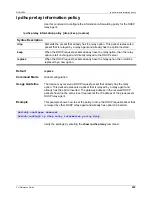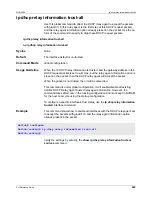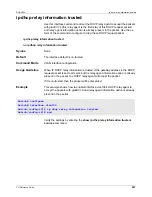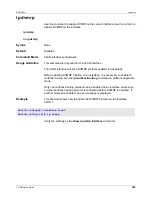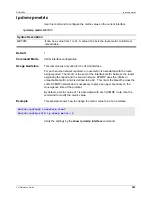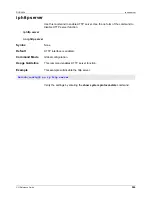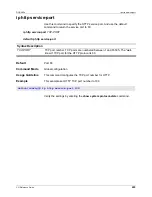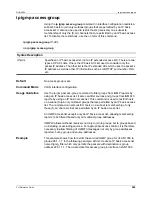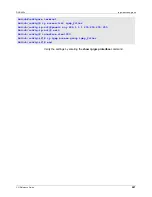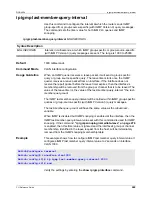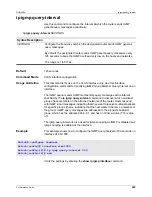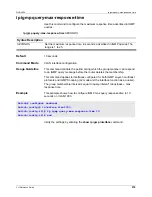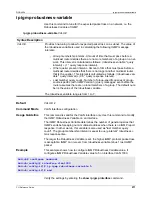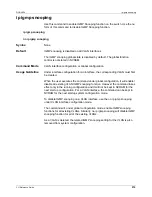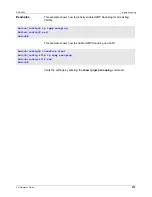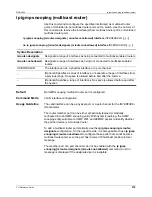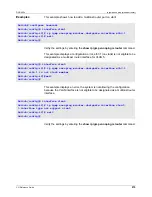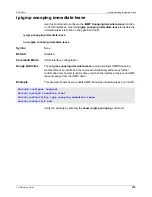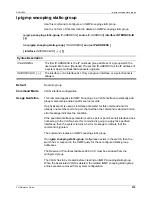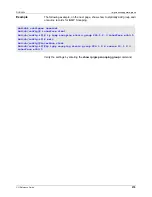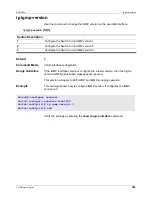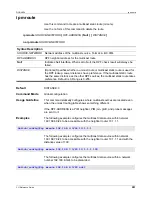
DGS-6604
ip igmp access-group
CLI Reference Guide
266
ip igmp access-group
Using the
ip igmp access-group
command in interface configuration restricts a
subnet's hosts to join only multicast groups that are permitted by an IP basic
access list. It also can be used to restrict hosts (receivers) on a subnet to
membership of only the (S,G) channels that are permitted by an IP basic access
list. To disable the restrictions, use the no form of this command.
ip igmp access-group
IP-ACL
no ip igmp access-group
Default
No access group is set.
Command Mode
VLAN interface configuration
Usage Guideline
Use the ip igmp access-group command to filter groups from IGMP reports by
using an IP basic access list. It also can filter sources and groups from IGMPv3
reports by using an IP basic access list. This command is used to restrict hosts
on a subnet to join only multicast groups that are permitted by an IP basic access
list. The command can also restrict hosts on a subnet to membership of only
those (S, G) channels that are permitted by an IP basic access list.
An IGMP access list accepts only an IP basic access list, allowing membership
reports to be filtered based only on multicast group addresses.
IGMPv3 allows multicast receivers not only to join to groups, but to groups based
on including or excluding sources. For appropriate access control, it is therefore
necessary to allow filtering of IGMPv3 messages not only by group addresses
reported, but by group and source addresses.
Example
This example shows how to restrict the serviced IGMP group for VLAN 1000 to
group 226.1.1.1. In the following example, at first, create an IP basic access list
named igmp_filter which only permits the packets with destination is group
address 226.1.1.1. Then, associate this access group in interface VLAN 1000.
Syntax Description
IP-ACL
Specifies an IP basic access list. (not an IP extended access list). There are two
types of IP ACL lists. One is the IP basic ACL list used to consider only the
packet IP address. The other list is the IP extended ACL which uses the packet’s
IP address as well as other IP information such as UDP/TCP port number, TOS,
etc.

